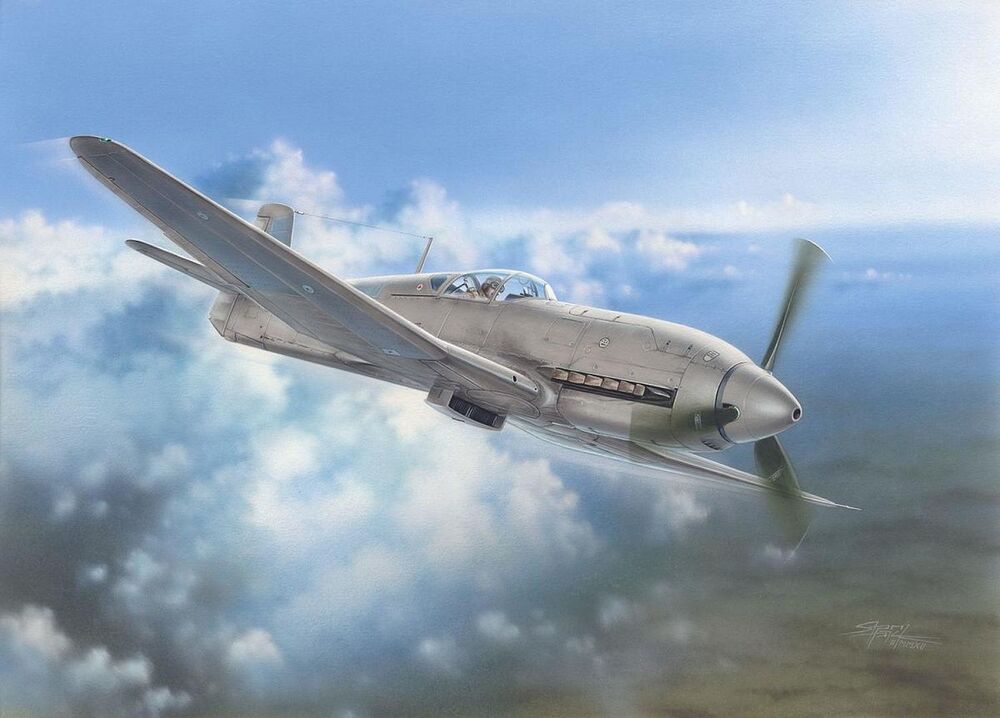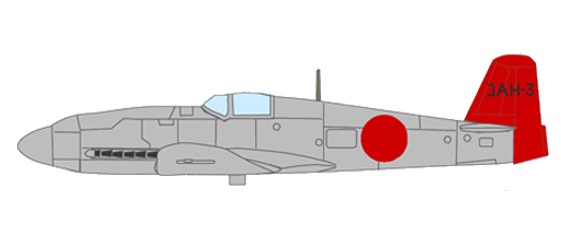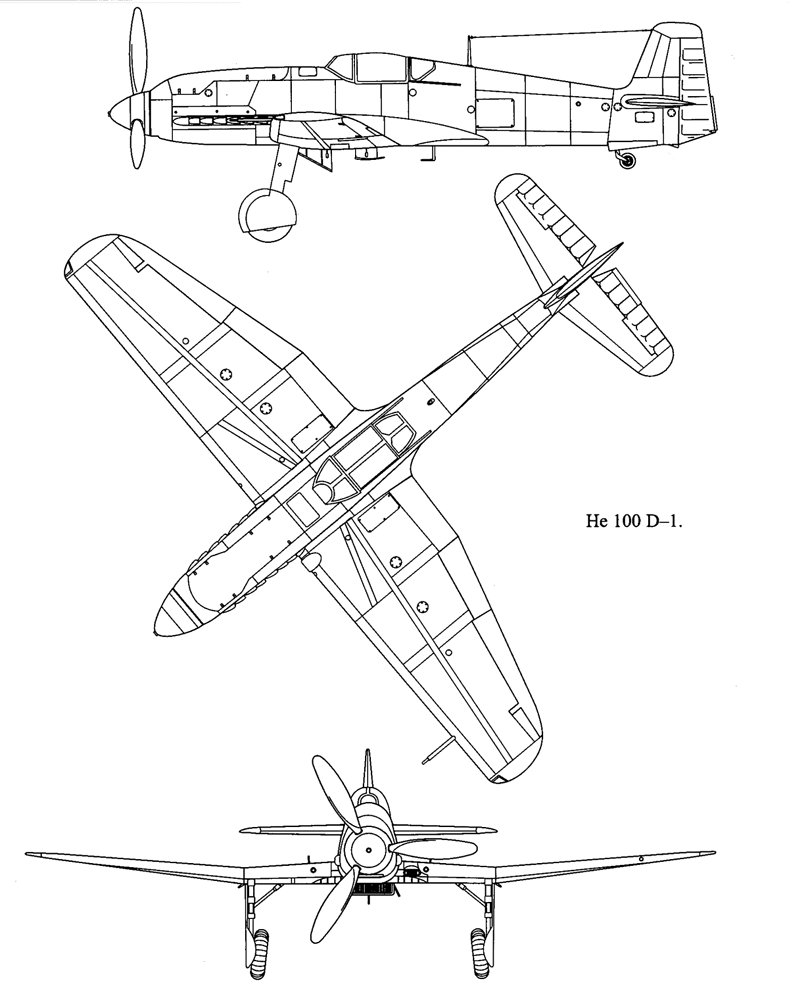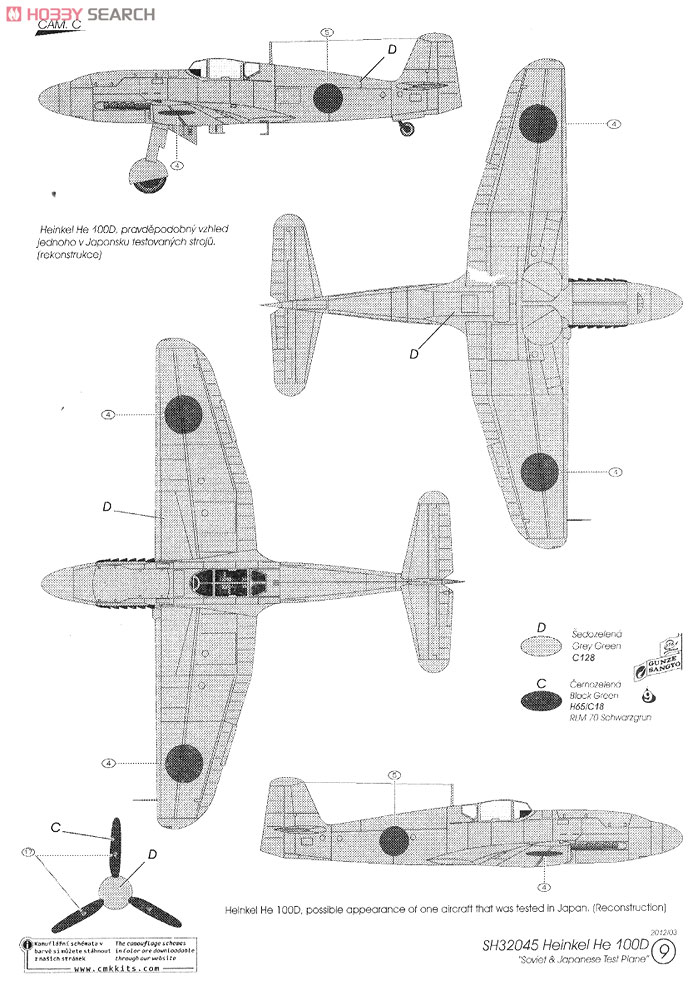- Yes
- No
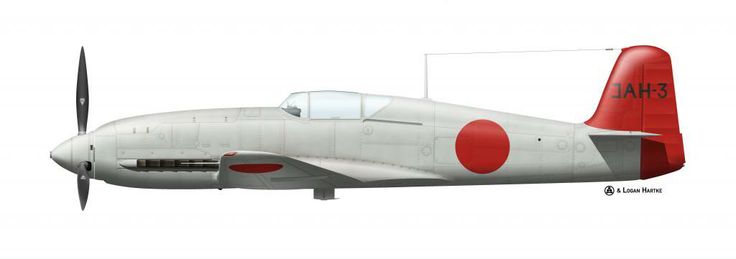
Heinkel AXHe1 (He 100 D-0) ( ハインケル AXHe1)
In 1939, the Japanese Navy purchased three Heinkel He-100 D-0 fighters, which arrived in Japan in 1940. These aircraft were designated as Experimental Heinkel Fighter, or AXHe1 for short, and were tested. The He-100 D-0 aircraft were supposed to be produced under license by the Hitachi Aircraft factories in Chiba, but this was not carried out due to the He-100 D-0’s overly advanced design. Technical solutions from the He-100 helped the Japanese in the construction of the Kawasaki Ki-64 (and additionally the Experimental Kawasaki Ki-61-I with suface evaporation cooling system)
History
In September 1939, the first Heinkel He-100 D-0 aircraft was completed at the German Heinkel factories, which the Heinkel company hoped would eventually allow them to sell their planes. At that time, due to the outbreak of war, the Heinkel factories received permission to sell the Heinkel He-100 aircraft. Shortly after the announcement of the possibility to sell the aircraft, information arrived at the Heinkel factory in Marienehe that a Japanese commission from the Japanese Navy wanted to see the aircraft and was interested in purchasing it. The Japanese were already aware of the He-100 due to very good relations with the Heinkel factories. A visit by the Japanese commission was scheduled for October 30, 1939; however, shortly after the news that the Japanese wanted to see the Heinkel He-100, a commission from the USSR also arrived, which was also interested in the He-100 and demanded that a presentation for them also be held on October 30, 1939. Shortly before, the battle of Khalkhin Gol between the USSR and Japan had ended, and the Germans were well aware that the Japanese and Soviet commissions would not want to meet in such a place. Therefore, the Germans had to figure out how to arrange two meetings so that the Japanese and Russians would not meet. The Germans managed to do this, and both meetings took a favorable turn: the Russians decided to buy prototype He-100s (V1, V2, V4, V5, V6, and V7), while the Japanese purchased 3 pre-production He-100 D-0 aircraft for 1.2 million RM and the technical plans, production license, and instruments for subsequent aircraft for 1.6 million RM (of course, the negotiations lasted more than one day). During the He-100 purchases, further attempts were made to buy the Heinkel He-119 aircraft. The purchased He-100 D-0s arrived in Japan in May 1940 or 1941 (contradiction of sources) along with the Heinkel He-119 aircraft, He-100 production plans, additional parts, and engineer Kurt Schmidt. He-100 D-0 aircraft received the Japanese designation Experimental Heinkel Fighter and the abbreviation AXHe1. The AXHe1 aircraft were sent to the area around Lake Kasumigaura, where tests were conducted on them. All Japanese pilots participating in the tests, as well as the test commission, were greatly impressed by the maximum speed (670 km/h). However, the tests showed that the AXHe1 was much less maneuverable than Japanese fighters. The command of the Japanese Navy considered the Heinkel aircraft ideal for local defense and wanted to start its production through Hitachi Aircraft, which built a factory in Chiba for this purpose. However, it turned out that the jig needed for He-100 production was damaged during transport, and production never started. Nevertheless, this was not the end of the He-100’s utilization by the Japanese. A very original engine cooling system was used in the Kawasaki Ki-61 and Kawasaki Ki-64 aircraft. The Japanese also used a constant-speed propeller with variable pitch (VDM), and the landing gear retraction mechanism was utilized by the Japanese as reference points for their own solutions. It is not known what happened after the tests with the three Heinkel AXHe1 fighters, but they probably did not survive the war.
Construction description
The Japanese Heinkel AXHe1 is exactly the same as the German Heinkel He-100 D-1 from War Thunder.
Construction details
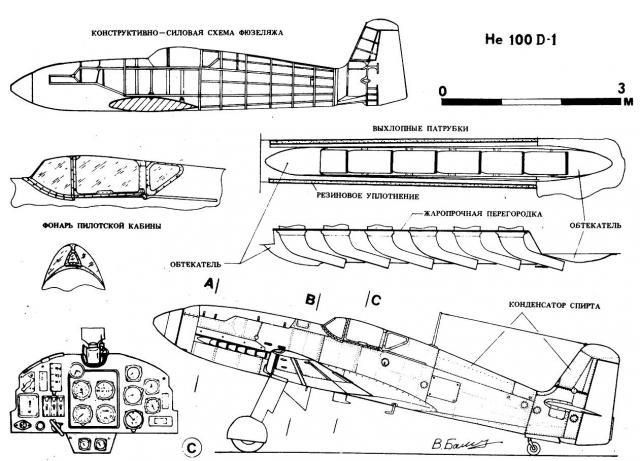
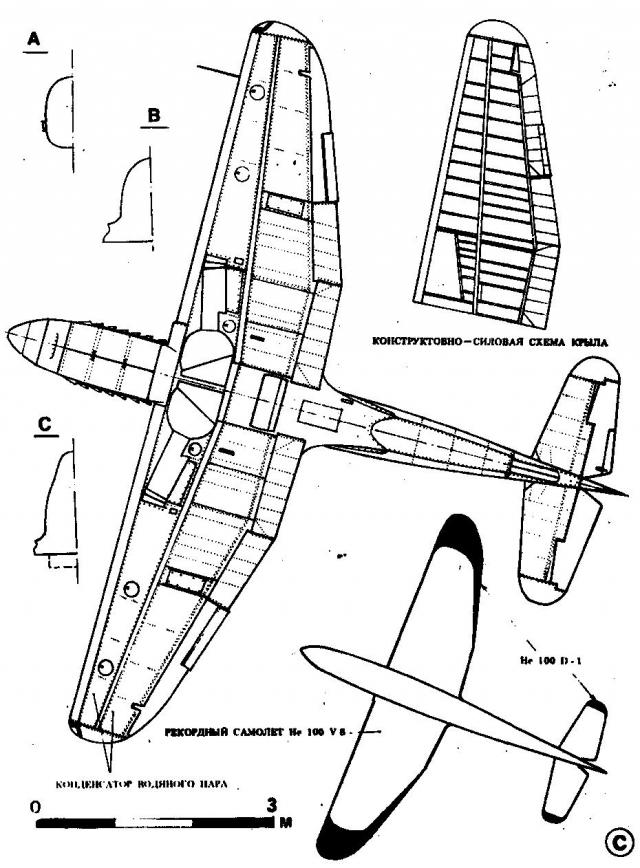
Comparison of the Heinkel He-100 D with other He-100 variants
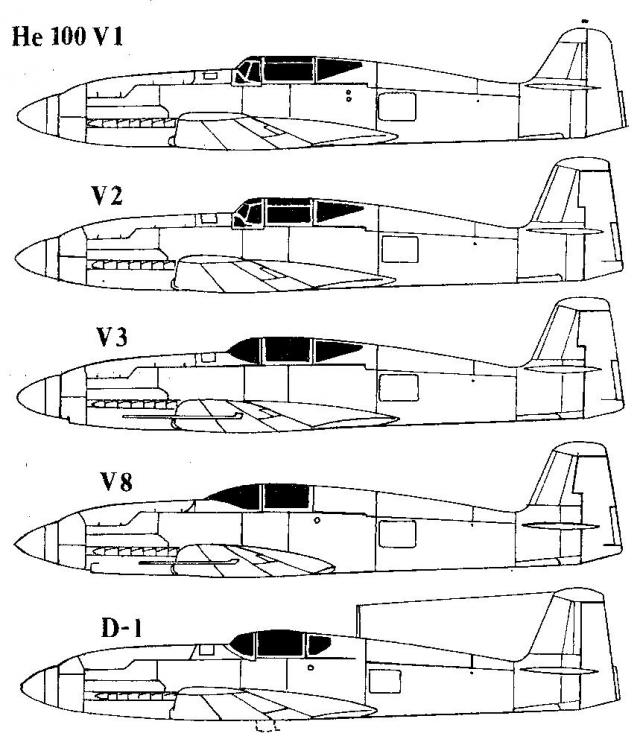
General characteristics
- Crew: 1
- Length: 8,20 m
- Wingspan: 9,40 m
- Height: 3,60 m
- Wing area: 14,60 m2
- Empty weight: 1810 kg
- Gross weight: 2,500 kg
- Maximum Take-off Weight: ?
- Powerplant: 1 x Daimler-Benz DB 601M V12 piston engine, liquid-cooled, with a takeoff power of 876 kW (1,175 hp)
- Propellers: three-blade VDM propeller with constant speed, diameter 2,800 mm
Performance
- Maximum speed: 670 km/h
- Cruising speed: 552 km/h
- Range: 690 km
- Maximum Range: 1010 km
- Service ceiling: 11000 m
- Climb Rate: ?
- Rate of climb: 7.8 minutes to 6,000 metres
Armament
- 2 x MG 17 7.98 mm machine guns in the wings
- 1 x MG 17 7.98 mm machine gun firing through the engine shaft
Summary
The Heinkel AXHe1 is an interesting aircraft for Japan in War Thunder. This fighter would be an excellent interceptor unmatched by Japanese planes of the same level (BR 1.7), which, thanks to its speed and firepower, is a great fighter. This aircraft would be an interesting premium or event plane. I encourage you to discuss in the comments and to share your own knowledge on this subject.
Finally, I apologize for the linguistic and logical errors because unfortunately English is not my main language and I had to use google translator.
Internet sources
He 100 (航空機) - Wikipedia
Heinkel He 100 - Wikipedia
Heinkel He 100 - German Interwar Aircraft & Warplanes - History
Heinkel He 100 D : Heinkel
Уголок неба ¦ Heinkel He.100
Book sources
- 日本航空機総集 輸入機篇 (Japan Aircraft Catalogue Imported Aircraft Edition) Shuppan Kyosha, 1972, page. 168
- 日本航空機辞典 1910年(明治43年)~1945年(昭和20年) 上巻 (Encyclopedia of Japanese Aircraft 1910 (Meiji 43) – 1945 (Showa 20), Volume 1) page 249

Thank you for reading the suggestion, see you in the next one. Good luck pilots

